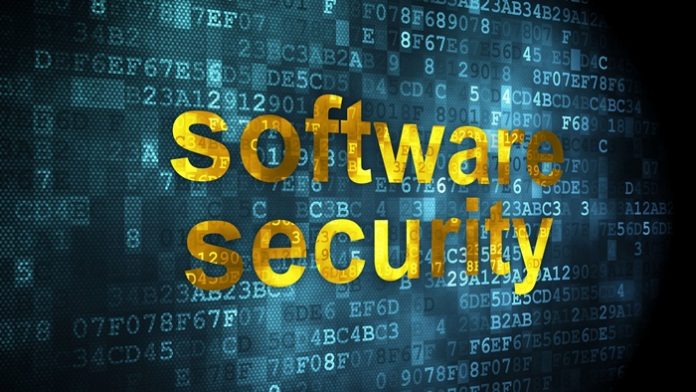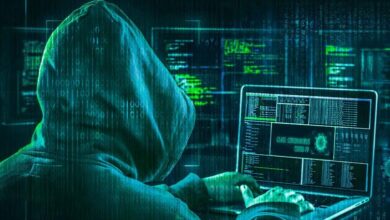What is software security and why is it so important now?

Every software company wants to make sure that their software security protocols are top-notch. There is no debate around that. But in today’s complex world of information technology, with businesses using more software than ever before and cyber attacks rampant, making sure software is truly secure can be difficult.
Computer security software is widely available today, helping businesses and end users ensure they are using the right software with the right tools to stay protected.
What is software security?
Software security is the concept of implementing mechanisms into the security building to help it remain functional (or resistant) to attack. This means that a piece of software undergoes security testing before it is released to verify its ability to resist malicious attacks.
The idea behind software security is to create software that is secure from the start without having to add additional security elements to add additional layers of security (although in many cases, this still happens). The next step is to teach users to use the software in the correct way to avoid being prone to or exposed to attacks.
Software security is critical because a malware attack can cause extreme damage to any piece of software while compromising integrity, authentication, and availability. If programmers take this into account at the programming stage and not afterward, the damage can be stopped before it starts.
What are the four types of computer security?
IT is security is the process of protecting all data of a particular entity, both electronic and physical. Computer security and cybersecurity are often considered close to each other. While this is true, computer security tends to be broader and not just focused on online criminal activity aimed at causing harm.
There are four main types of IT security that are important to understand when it comes to software security.
- Network Security: Security between different devices located on the same network. In this case, both software and hardware security are important. When protecting a network, companies want to ensure that their network is not used maliciously.
- Endpoint security: In this scenario, security is focused on the devices used. This means that laptops, phones, computers, tablets, and other devices are secure (again, both software and hardware) to prevent entry by unwanted users. This often involves various encryption methods, user controls, and of course software security.
- Internet security: this is what is commonly known as cybersecurity and deals with the transit and use of information. Cybersecurity attacks occur when information is intercepted, and therefore multiple layers of encryption and authentication are often used to stop these attacks.
- Cloud Security – Cloud security revolves around reducing software security risks within the cloud. Some of the cloud security concepts overlap with the other forms of security listed here, having to protect data transfers and devices on the same network.
Software Security vs. Application Security
The concepts of software security and application security often go together. In fact, many companies today choose to place their emphasis on application security, such as after the development process.
That is the important differentiation between application security and software security. Software security vulnerabilities must be fixed before it is deployed and shipped to end users.
This requires effort and commitment on the part of programmers and engineers in the development stage. Once the product hits the market, it may be too late (or require substantial changes in future updates, a situation most companies prefer to avoid).
Software Security Best Practices
There is a wide variety of software security tools and solutions. As with any other security practice, you’ll need to create a strategy to ensure that your software security solutions remain relevant and work to your advantage.
Keep your software current and with the corresponding revisions
Every piece of software has problems sometimes. There’s no way to avoid it. But this is one of the most common ways that hackers act on software users. This is why regular software updates and patches are an important step in ensuring software security.
Software security services and tools can help software users keep up with the maintenance and inventory of a wide range of software programs.
Least privileges
Least privilege is the concept of giving software users minimal access to programs in order to get their work done. In other words, don’t give them access to features, access rights, and controls they don’t need to use.
By enforcing a least privilege policy, you’ll reduce the risk of attacks by ensuring that no one accidentally changes access rights by mistake or has access to information they don’t need. Don’t forget to reevaluate privileges when employees change jobs, complete projects, and of course leave the company.
Consider automation for software security tasks
Large companies or corporations cannot keep track of the wide range of tasks that they need to perform on a regular basis manually. This is where automation comes in (if hackers are using it, you should be too).
IT departments need to automate common tasks that are important to computer security software, such as security settings, firewall change analysis, and more. To automate, companies need to invest in the right software security tools and solutions.
Education, education, education
Software security risks don’t disappear with the push of a button. Educating employees is an important part of ensuring software security and minimizing software security vulnerabilities.
Schedule one day per quarter to review software security risks, why data is important, and what employees can do to keep themselves and the company protected. It is also important to teach employees to recognize signs of security attacks, and phishing attempts, among others.
- How to Enable WhatsApp Security Code Alerts
- 10 Ways Evolving Technology Affects Cybersecurity
- How Cybersecurity is Changing Technology Today
The document, monitor and measure
Write down all of your software security policies so everyone on board has access and a thorough understanding of the processes involved (don’t forget to show them to new hires!).
As time passes, it is important to monitor and measure activity. In this way, you can ensure that your users are implementing practices related to computer security software and are not abusing privileges or other harmful measures. We also recommend defining key metrics so that you can track your software security risks and security over time.




